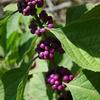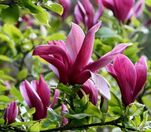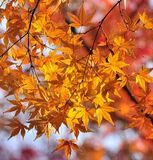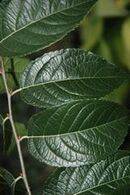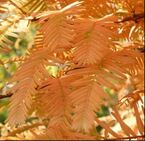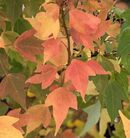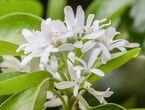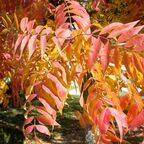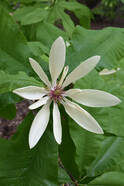Our Native Tree and Plant Sale was a Huge Success!
So many people came out to support Keep Carbondale Beautiful
and to find some native plants they could use to beautify their own yards!
Our special thanks to:
Forrest Keeling Nursery
-
Tabor Wholesale Nursery
and
All Our Wonderful Volunteers
(We'll see you all in the Spring for our next Big Tree Sale Event!)
FALL 2020 TREE SALE UPDATE
|
|
What: The Fall 2020 Native Tree and Shrub Sale
When: October 3rd, starting at 9:00am
Where: Downtown Carbondale at the Pavillion
Why: Because planting Native is ecologically responsible and can raise the price of your home!
Who: We're Keep Carbondale Beautiful and the proceeds of this sale allow us to continue doing just that
The following species of tree have been procured from Tabor Wholesale Nursery
Betula nigra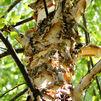
River Birch distinctive bark; good for rain gardens and erosion control -- prefers moist, well-drained soil, but tolerates dry; prefers deep, rich soils, but will grow in clay soils. Grow as single trunk or as a multi-stemmed tree. Height: 40-70 feet.
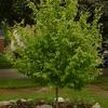 Carpinus caroliniana Carpinus caroliniana
Carpinus caroliniana*
*American Hornbeam* is a handsome small- to medium-sized tree with multiple stems that forms wide, horizontal canopy. Good fall color. Beautiful thin, blue-gray bark is ornamental. Height 20-40' Carya illinoinensis
Pecan The largest member of the hickory family (with the sweetest nuts!). Prefers rich, moist soils. Tall straight trunk with symmetrical, broadly oval crown. Height: 70-100 feet.
Cladastris kentukea/lutea
Yellowwood is an excellent, medium-sized specimen tree, with light green compound leaves turning gold in fall. Spectacular panicles of fragrant, creamy-white spring flowers. Yellowwood bark is very smooth and gray. This is an underused, beautiful native tree.
Gymnocladus dioicus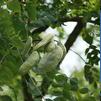
Kentucky Coffeetree Native shade tree with interesting shape, deeply furrowed bark; adapts to wide variety of sites. Height: 60-80 feet.
Quercus rubra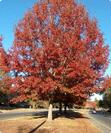
Northern Red Oak Native to the Midwest. One of the faster growing oaks for the home landscape. This tree is found frequently in urban areas because of its low maintenance and durability. Handsome leaves that can go from a deep green in the summer to a bright red in the fall.
Quercus pagoda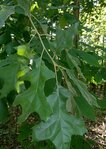
Cherrybark Oak This tree is 60-110' at maturity, forming a relatively long trunk about 2½-6' across and a rounded crown. The blooming period occurs during mid-spring for 1-2 weeks. The preference is full sun, moist conditions, and loamy soil.
Quercus muehlenbergii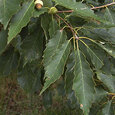
Chinkapin Oak Its glossy, coarsely-toothed leaves are yellow-green and small compared to most oaks. Fall color varies from yellow to orangish-brown to brown. As this species matures, it becomes a magnificent specimen and a conversation piece.
Quercus lyrata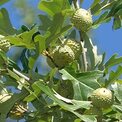
Overcup Oak This species has brilliant reddish or gray brown bark and displays leathery dark green leaves in summer. Fall color is a rich yellow-brown. The flowers are catkins, produced in the spring and maturing in about 6–7 months into acorns.
Quercus imbricaria
Shingle Oak The leaves are dark green in summer, changing to yellow-brown to russet in fall. Leaves persisting through the entire winter. Wood was once used by early settlers in the midwest for shingles, hence the common name.
Quercus michauxii
Swamp Chestnut Oak A member of the white oak family, it produces extremely large acorns that are highly attractive to whitetails. This species provides dense shade and good red fall color.
|
Nyssa sylvatica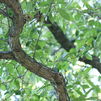
Black Gum rivals anything for fall color with spectrum of glowing shades. Fruit is favored by many birds. This is not a sweetgum tree.
Quercus alba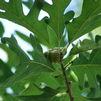
White Oak a large, majestic, and long-lived oak that holds year long interest. Our state tree in Illinois. Round-lobed leaves and smooth, medium-sized acorns. Height: 45-50 feet; can be as wide as it is tall.
Quercus bicolor
*Swamp White Oak* is a large tree with broad crown. Leaves turn varied shades in fall from bronze to red.
Quercus macrocarpa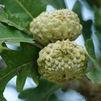
Bur Oak has the largest acorns and leaves of all the oaks. Slow-growing and long-lived, it has a magnificent form in old age. Brown fall foliage persists all winter. Height: 50-60 feet.
Quercus shumardii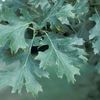
*Shumard Oak* is a huge, bottomland tree considered the southern counterpart to the Northern Red Oak. In fall, it shows good red color and is one of the first of the season to change.
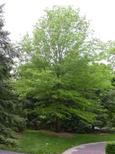
Quercus phellos
Willow Oak has foliage shaped like beefy willow leaves that turn yellow to russet red in fall. Typically found in moist bottomland soils but adapts to a wide range of soil conditions including clays with somewhat poor drainage. Generally tolerant of urban pollution. A 2005 Missouri Botanical Garden Plants of Merit winner. Height 30-40' Taxodium distichum
Bald Cypress Bald Cypress is a deciduous conifer, with medium-fine, needle-like leave that are soft-textured and light green in summer but turn rusty brown in winter before they drop. Great choice for compacted, urban sites where soil oxygen is low. Height: 50-70 ft.; Full sun; does very well in wet sites
Carya aquatica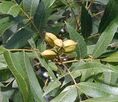
Water Hickory Also known as Bitter Pecan, its nuts are eaten by ducks and other birds. Larval host plant to Luna moths, funeral dagger moths, and giant regal moths. Bark is gray-brown, often red-tinged. Its green feather leaves yellow in the fall.
Nyssa aquatica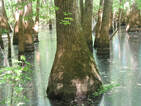
Water Tupelo Also called cottongum, sourgum, swamp tupelo, tupelo-gum, and water-gum
Ostrya virginiana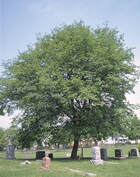
Hop Hornbeam A small to medium-sized, understory tree with a generally rounded crown. Typically grows 25-40' tall. Features birch-like, oval to lance-shaped, sharply-serrated, dark yellowish-green leaves. Leaves turn an undistinguished yellow in autumn and often drop early.
Cotinus obovatus
American Smoketree Six to ten inch flower panicles develop long, red or purple, hairlike petioles that, in the crowded flower clusters, create a smoky appearance.Berries occur infrequently on pinkish stems; these also have a smoke-like look. Spring leaves are silky pink, becoming bluish to dark green. Fall leaves are magnificently colorful. A gnarled limb structure and the dark, flaking bark are other attributes.
|
The following species of shrubs have also been procured from Tabor Wholesale Nursery
The following species have been procured from Forrest Keeling Nursery
Acer saccharum
Sugar Maple ... a large shade tree with excellent form. Famous for its prized syrup, ... fabulous fall color ... grows in a variety of soil types but prefers a rich, well-drained soil. Height: 60-75 feet.
Asimina triloba

*Pawpaw* is a multi-stemmed shrub or small tree is a great plant for attracting all kinds of wildlife. Pawpaw's yellowish fruit is relished by many birds and small mammals. Pawpaw spreads slowly to form small colonies or thickets, providing good cover for a variety of wildlife. Generally considered deer resistant.
Betula nigra
River Birch distinctive bark; good for rain gardens and erosion control -- prefers moist, well-drained soil, but tolerates dry; prefers deep, rich soils, but will grow in clay soils. Grow as single trunk or as a multi-stemmed tree. Height: 40-70 feet.
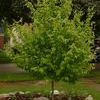 Carpinus caroliniana Carpinus caroliniana
Carpinus caroliniana*
*American Hornbeam* is a handsome small- to medium-sized tree with multiple stems that forms wide, horizontal canopy. Good fall color. Beautiful thin, blue-gray bark is ornamental. Height 20-40' Carya illinoinensis

Pecan The largest member of the hickory family (with the sweetest nuts!). Prefers rich, moist soils. Tall straight trunk with symmetrical, broadly oval crown. Height: 70-100 feet.
Carya ovata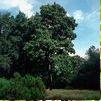
*Shagbark Hickory* Highly adaptable species for landscape use. The gray to brown bark peels off in thin sections. and golden brown tones. Produces large, edible hickory nuts. A long lived tree. They are considered to produce a lot of 'litter'(bark and nuts) so place accordingly. Height: 60-80 feet. [These trees will come small, but they are hard to find.] Look here, too.
Celtis occidentalis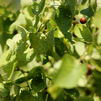
*Hackberry* is a reliable, fast-growing, all-purpose shade tree. Hackberry's pyramidal shape when young then develops a broad crown with ascending branches. The leaves are medium green. Fall foliage is a soft yellow. Birds and wildlife relish the small, fleshy fall fruit.
Cercis canadensis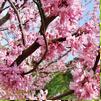
Redbud native favorite and harbinger of spring that explodes with rosy pink flowers in April. Native Eastern Redbud does well in sun to dappled shade. Adapts to any average garden soil. Height: 20-25
Chionanthus virginicus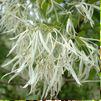
Fringetree. Shimmering, white fringed flowers cover Fringetree in May or June followed by small, round fall fruit on female trees. leaves often turn bright yellow in fall. Grow in part sun to shade as a small tree or shrub. Beautiful as a single specimen or planted in groups.
Cladastris kentukea/lutea

Yellowwood is an excellent, medium-sized specimen tree, with light green compound leaves turning gold in fall. Spectacular panicles of fragrant, creamy-white spring flowers. Yellowwood bark is very smooth and gray. This is an underused, beautiful native tree.
Cornus alternifolia
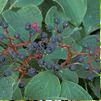
Pagoda Dogwood Classic white flowers in spring. Spreading, low-branched tree with horizontal habit and burgundy fall foliage. Good alternative to cold-sensitive Flowering Dogwood. Height: 15-25 feet.
Cornus florida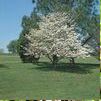
Limited quantities for Fall 2016
Flowering Dogwood Favorite companion to redbuds; understory tree that likes shade, but needs well-drained soil. Provides food and cover for watchable wildlife. Height: 15-30 feet. Diospyros virginiana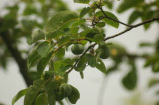
Persimmon Commonly seen along fencerows, roadsides and field edges, Persimmon is a slow-growing tree that produces small, bell-shaped flowers in spring. After frost, mature persimmon fruits turn orange and taste similar to an apricot. Persimmon fruits are a valuable food source to wildlife.
Fagus grandiflora
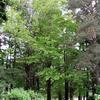
American Beech is a large tree, with a dense, oval to round crown and smooth, silvery-gray bark. The leaves are dark green, simple and sparsely-toothed with small teeth. The fruit is a small, sharply-angled nut, borne in pairs in a soft-spined, four-lobed husk.
Gymnocladus dioicus
Kentucky Coffeetree Native shade tree with interesting shape, deeply furrowed bark; adapts to wide variety of sites. Height: 60-80 feet.
Halesia carolina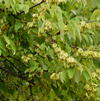
Carolina Silverbell is a small native tree with white, bell-shaped spring flowers. Full sun or partial shade.
|
Juglans nigra *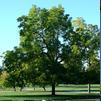
*Black Walnut* Not a great urban tree - it poisons its neighbors and produces litter which stains. BUT if you have enough land, it is disease-resistant and makes beautiful wood.
Liriodendron tulipifera
Tulip Poplar - a stately tree. Pyramidal when young, rounded when mature. Leaves turn golden yellow in fall. Tulip-shaped summer flowers followed by interesting fruit. Height: 70-90 feet.
Magnolia acuminata
Cucumber Tree the largest of the Magnolias, the Cucumber Tree is an excellent shade tree. ... has coarse textured leaves with greenish white fragrant flowers. Height: 50-80 feet.
Nyssa sylvatica

Black Gum rivals anything for fall color with spectrum of glowing shades. Fruit is favored by many birds. This is not a sweetgum tree.
Ostrya virginiana *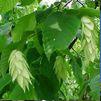
*Eastern Hophornbeam* understory tree with a dense pyramidal shape and attractive bladder-like seed pods. Disease- and pest-resistant. Height: 25-40 feet
Pinus echinata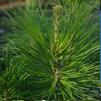
Shortleaf Pine occurs in dry, sandy or rocky upland areas, but tolerates a wide range of soils. Medium-sized, fast-growing with short pyramidal crown that broadens with age. Migrating butterflies use Shortleaf Pine for roosting. Height: 50-60 feet.
Platanus occidentalis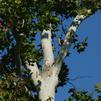
Sycamore Thrives on nearly any site; develops a massive trunk with an open wide-spreading crown and has leaves that can grow to nine inches in width. In winter, Sycamore's characteristic large patches of creamy white inner bark are prominent making it a winter landscape standout. Height: 75-100 feet
Quercus alba

White Oak a large, majestic, and long-lived oak that holds year long interest. Our state tree in Illinois. Round-lobed leaves and smooth, medium-sized acorns. Height: 45-50 feet; can be as wide as it is tall.
Quercus bicolor
*Swamp White Oak* is a large tree with broad crown. Leaves turn varied shades in fall from bronze to red.
Quercus macrocarpa
Bur Oak has the largest acorns and leaves of all the oaks. Slow-growing and long-lived, it has a magnificent form in old age. Brown fall foliage persists all winter. Height: 50-60 feet.
Quercus shumardii
*Shumard Oak* is a huge, bottomland tree considered the southern counterpart to the Northern Red Oak. In fall, it shows good red color and is one of the first of the season to change.

Quercus phellos
Willow Oak has foliage shaped like beefy willow leaves that turn yellow to russet red in fall. Typically found in moist bottomland soils but adapts to a wide range of soil conditions including clays with somewhat poor drainage. Generally tolerant of urban pollution. A 2005 Missouri Botanical Garden Plants of Merit winner. Height 30-40' Quercus texana
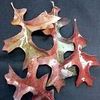
*Nuttall Oak* offers richer red fall color, better branching structure, and higher transplant survival than other oaks.
Sassafras albidum
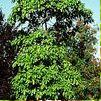
Sassafras In early spring, clusters of small yellow flowers smother the tree. In the summer, fragrant leaves occur in a variety of shapes (even on the same branch). In the fall, Sassafras leaves take on colors ranging from purple to scarlet. BTW - Tea is disrecommended now. Spreads through root sprouts. Height: 30-60 feet.
Taxodium distichum

Bald Cypress Bald Cypress is a deciduous conifer, with medium-fine, needle-like leave that are soft-textured and light green in summer but turn rusty brown in winter before they drop. Great choice for compacted, urban sites where soil oxygen is low. Height: 50-70 ft.; Full sun; does very well in wet sites
Tilia americana
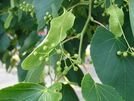
American Basswood (aka Linden) American Basswood (or Linden) is a stately tree with fragrant, yellow, spring flowers. Its high-quality nectar attracts bees and other pollinators. Fall foliage is deep yellow.
Height: 60-75 ft. Full sun |
This is a fundraiser for KCB. We cannot guarantee that the tree will grow where you plant it. We pay for all the trees we sell.

